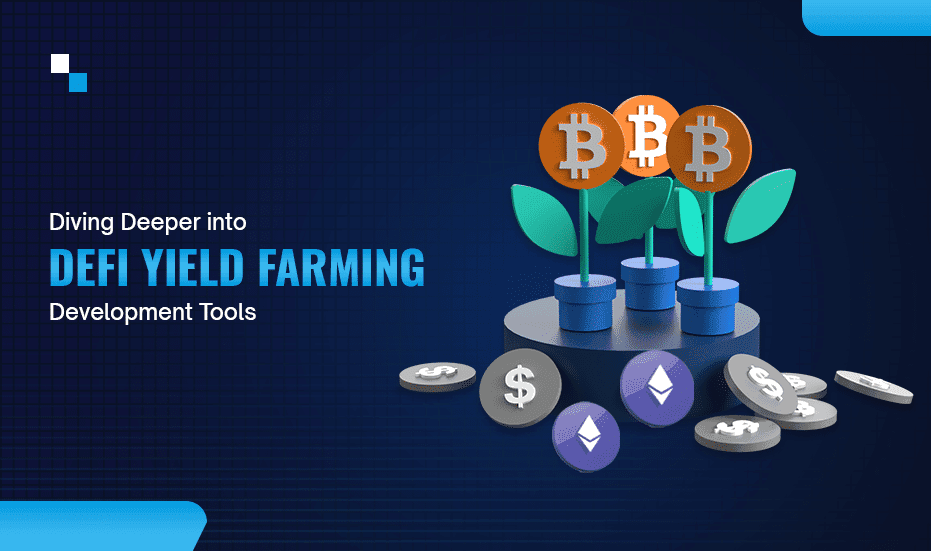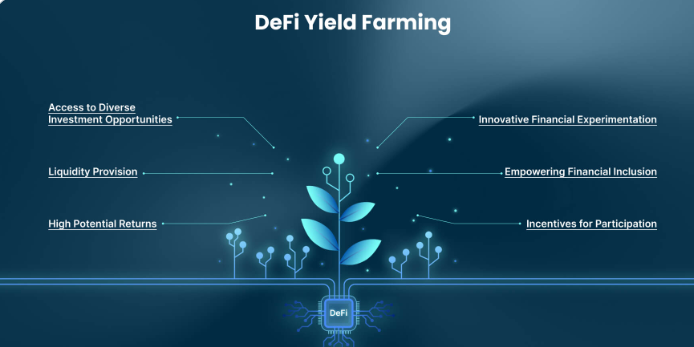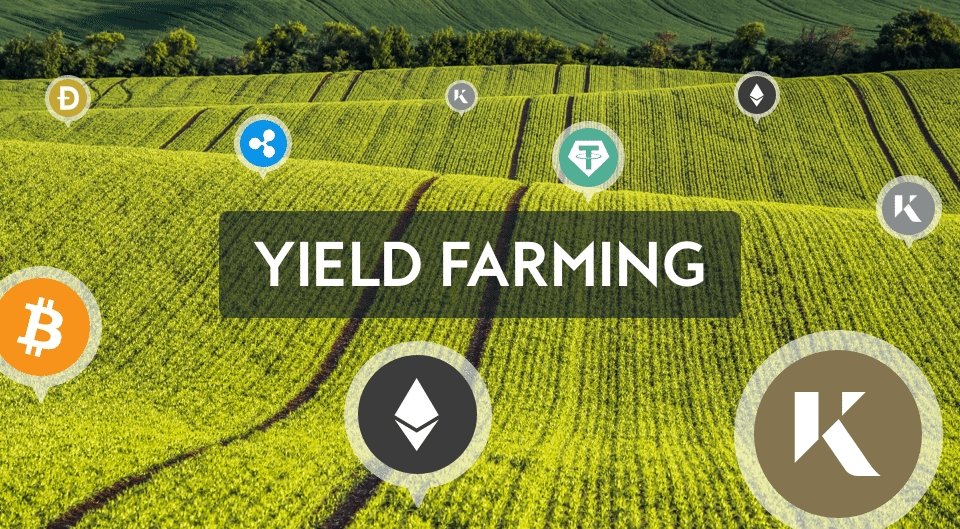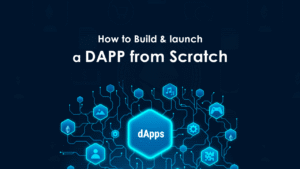Yield farming is like planting seeds in DeFi: you stake your crypto in a protocol and harvest rewards. These rewards come from smart contracts, the backbone of platforms like Compound or Yearn. Want to build your own? This beginner-friendly tutorial walks you through creating a yield farming smart contract on Ethereum using Solidity. We’ll break down the code step-by-step, making it easy for anyone to follow. Let’s grow some crypto!

What Is Yield Farming?
Yield farming lets you earn rewards by locking crypto in DeFi protocols, often as tokens. You might stake tokens in a liquidity pool or a staking contract to earn interest or governance tokens. A smart contract automates this, ensuring fair reward distribution. Our contract will let users stake a token, earn rewards, and withdraw their funds.
Key features of yield farming include:
- Reward Incentives: Earn tokens for providing liquidity or staking.
- Decentralized: No bank or middleman controls the process.
- Flexible: Stake or unstake anytime (depending on the protocol).
This tutorial focuses on building a staking-based yield farming contract.
Why Build Yield Farming Smart Contracts?
Yield farming powers DeFi, with billions staked in 2025. Building your own contract lets you:
- Create Value: Offer new ways for users to earn rewards.
- Learn DeFi: Understand staking, rewards, and smart contract logic.
- Innovate: Experiment with unique reward models.
Our contract will teach you how to manage stakes and distribute rewards securely.

Tools You’ll Need
To build the smart contract, gather these tools:
- Node.js: For JavaScript execution. Download from nodejs.org.
- Hardhat: For smart contract development. Install via
npm install --save-dev hardhat. - MetaMask: For testing on testnets. Get it at metamask.io.
- OpenZeppelin: For secure contract templates. Install with
npm install @openzeppelin/contracts.
These tools are beginner-friendly and widely used in DeFi development.
Step-by-Step: Building a Yield Farming Smart Contract
We’ll create a yield farming protocol where users stake an ERC-20 token (“FarmToken”) and earn another ERC-20 token (“RewardToken”). The contract will track stakes, calculate rewards based on time, and allow withdrawals. Let’s walk through the Solidity code!
Step 1: Set Up the Hardhat Project
Create a project directory and initialize Hardhat:
mkdir yield-farming
cd yield-farming
npx hardhat
npm install @openzeppelin/contracts
Choose the JavaScript project option. Hardhat will set up a development environment for Solidity.
Step 2: Create the ERC-20 Tokens
First, we need two ERC-20 tokens: one for staking and one for rewards.
Create contracts/FarmToken.sol for the staking token:
// SPDX-License-Identifier: MIT
pragma solidity ^0.8.0;
import "@openzeppelin/contracts/token/ERC20/ERC20.sol";
contract FarmToken is ERC20 {
constructor(uint256 initialSupply) ERC20("FarmToken", "FTK") {
_mint(msg.sender, initialSupply);
}
}
Create contracts/RewardToken.sol for the reward token:
// SPDX-License-Identifier: MIT
pragma solidity ^0.8.0;
import "@openzeppelin/contracts/token/ERC20/ERC20.sol";
contract RewardToken is ERC20 {
constructor(uint256 initialSupply) ERC20("RewardToken", "RTK") {
_mint(msg.sender, initialSupply);
}
}
These contracts create “FarmToken” (FTK) and “RewardToken” (RTK) with an initial supply set during deployment. We use OpenZeppelin’s ERC-20 template for security.
Step 3: Write the Yield Farming Smart Contract
Create contracts/YieldFarm.sol for the farming logic. Let’s break down the code:
// SPDX-License-Identifier: MIT
pragma solidity ^0.8.0;
import "@openzeppelin/contracts/token/ERC20/IERC20.sol";
import "@openzeppelin/contracts/security/ReentrancyGuard.sol";
contract YieldFarm is ReentrancyGuard {
IERC20 public farmToken; // Token users stake
IERC20 public rewardToken; // Token users earn
uint256 public rewardRate = 10; // 10 RTK per second per 1000 FTK staked (simplified)
uint256 public totalStaked;
mapping(address => uint256) public stakedBalance;
mapping(address => uint256) public rewards;
mapping(address => uint256) public lastUpdateTime;
event Staked(address indexed user, uint256 amount);
event Unstaked(address indexed user, uint256 amount);
event RewardsClaimed(address indexed user, uint256 amount);
constructor(address _farmToken, address _rewardToken) {
farmToken = IERC20(_farmToken);
rewardToken = IERC20(_rewardToken);
}
// Update rewards for a user based on time and stake
function updateRewards(address account) internal {
if (account != address(0)) {
uint256 timeElapsed = block.timestamp - lastUpdateTime[account];
rewards[account] += (stakedBalance[account] * rewardRate * timeElapsed) / (1000 * 1e18);
lastUpdateTime[account] = block.timestamp;
}
}
// Stake FTK tokens
function stake(uint256 amount) external nonReentrant {
require(amount > 0, "Amount must be greater than 0");
updateRewards(msg.sender);
farmToken.transferFrom(msg.sender, address(this), amount);
stakedBalance[msg.sender] += amount;
totalStaked += amount;
emit Staked(msg.sender, amount);
}
// Unstake FTK tokens
function unstake(uint256 amount) external nonReentrant {
require(amount > 0 && stakedBalance[msg.sender] >= amount, "Invalid amount");
updateRewards(msg.sender);
stakedBalance[msg.sender] -= amount;
totalStaked -= amount;
farmToken.transfer(msg.sender, amount);
emit Unstaked(msg.sender, amount);
}
// Claim accumulated RTK rewards
function claimRewards() external nonReentrant {
updateRewards(msg.sender);
uint256 reward = rewards[msg.sender];
require(reward > 0, "No rewards to claim");
rewards[msg.sender] = 0;
rewardToken.transfer(msg.sender, reward);
emit RewardsClaimed(msg.sender, reward);
}
// View pending rewards
function getPendingRewards(address account) external view returns (uint256) {
uint256 timeElapsed = block.timestamp - lastUpdateTime[account];
return rewards[account] + (stakedBalance[account] * rewardRate * timeElapsed) / (1000 * 1e18);
}
}
Code Walkthrough:
- Imports and Setup: We use OpenZeppelin’s
IERC20for token interactions andReentrancyGuardto prevent reentrancy attacks. - State Variables: Track the staking and reward tokens, total staked amount, and each user’s stake, rewards, and last update time.
- Reward Logic: The
updateRewardsfunction calculates rewards based on staked amount, time elapsed, and a simplified reward rate (10 RTK per second per 1000 FTK). - Functions:
stake: Transfers FTK to the contract and updates the user’s stake.unstake: Returns FTK to the user and updates rewards.claimRewards: Sends accumulated RTK to the user.getPendingRewards: Shows real-time rewards without updating state.
- Events: Log staking, unstaking, and reward claims for transparency.
This contract is simple but mirrors real-world yield farming protocols like Yearn.

Step 4: Deploy the Contracts
Create a deployment script in scripts/deploy.js:
const hre = require("hardhat");
async function main() {
const [deployer] = await ethers.getSigners();
const initialSupply = ethers.parseEther("1000000"); // 1M tokens
const FarmToken = await hre.ethers.getContractFactory("FarmToken");
const farmToken = await FarmToken.deploy(initialSupply);
await farmToken.deployed();
console.log("FarmToken deployed to:", farmToken.target);
const RewardToken = await hre.ethers.getContractFactory("RewardToken");
const rewardToken = await RewardToken.deploy(initialSupply);
await rewardToken.deployed();
console.log("RewardToken deployed to:", rewardToken.target);
const YieldFarm = await hre.ethers.getContractFactory("YieldFarm");
const yieldFarm = await YieldFarm.deploy(farmToken.target, rewardToken.target);
await yieldFarm.deployed();
console.log("YieldFarm deployed to:", yieldFarm.target);
await farmToken.approve(yieldFarm.target, initialSupply);
await rewardToken.transfer(yieldFarm.target, initialSupply);
console.log("Tokens approved and transferred");
}
main().catch((error) => {
console.error(error);
process.exitCode = 1);
});
Configure hardhat.config.js for Sepolia (use an API key from Infura or Alchemy):
require("@nomicfoundation/hardhat-toolbox");
module.exports = {
solidity: "0.8.0",
networks: {
sepolia: {
url: "https://sepolia.infura.io/v3/YOUR_API_KEY",
accounts: ["YOUR_PRIVATE_KEY"]
}
}
};
Deploy with npx hardhat run scripts/deploy.js --network sepolia. Note the contract addresses. The script:
- Deploys both tokens and the farming contract.
- Approves the farming contract to spend FTK.
- Transfers RTK to the farming contract for rewards.
Step 5: Test the Smart Contract
Create a test file in test/YieldFarm.js to verify the contract:
const { expect } = require("chai");
const { ethers } = require("hardhat");
describe("YieldFarm", function () {
let farmToken, rewardToken, yieldFarm, owner, user1;
beforeEach(async function () {
[owner, user1] = await ethers.getSigners();
const initialSupply = ethers.parseEther("1000000");
const FarmToken = await ethers.getContractFactory("FarmToken");
farmToken = await FarmToken.deploy(initialSupply);
await farmToken.deployed();
const RewardToken = await ethers.getContractFactory("RewardToken");
rewardToken = await RewardToken.deploy(initialSupply);
await rewardToken.deployed();
const YieldFarm = await ethers.getContractFactory("YieldFarm");
yieldFarm = await YieldFarm.deploy(farmToken.target, rewardToken.target);
await yieldFarm.deployed();
await farmToken.transfer(user1.address, ethers.parseEther("1000"));
await farmToken.connect(user1).approve(yieldFarm.target, ethers.parseEther("1000"));
await rewardToken.transfer(yieldFarm.target, initialSupply);
});
it("should allow staking and unstaking", async function () {
await yieldFarm.connect(user1).stake(ethers.parseEther("100"));
expect(await yieldFarm.stakedBalance(user1.address)).to.equal(ethers.parseEther("100"));
await yieldFarm.connect(user1).unstake(ethers.parseEther("100"));
expect(await yieldFarm.stakedBalance(user1.address)).to.equal(0);
});
it("should distribute rewards correctly", async function () {
await yieldFarm.connect(user1).stake(ethers.parseEther("1000"));
await ethers.provider.send("evm_increaseTime", [3600]); // Fast-forward 1 hour
await ethers.provider.send("evm_mine", []);
const rewards = await yieldFarm.getPendingRewards(user1.address);
expect(rewards).to.be.above(0);
await yieldFarm.connect(user1).claimRewards();
expect(await rewardToken.balanceOf(user1.address)).to.equal(rewards);
});
});
Run tests with npx hardhat test. The tests check:
- Staking and unstaking update balances correctly.
- Rewards accumulate over time and can be claimed.
Test on Sepolia using MetaMask: stake FTK, wait a few minutes, and claim RTK. Get test ETH from sepoliafaucet.com.
Step 6: Secure the Contract
Yield farming contracts handle valuable assets, so security is critical. Add these protections:
- ReentrancyGuard: Already included to prevent reentrancy attacks.
- Input Validation: Checks like
amount > 0prevent invalid inputs. - Precision Handling: Use
1e18to avoid decimal errors in reward calculations.
Run a static analysis tool like Slither to catch vulnerabilities:
pip install slither-analyzer
slither contracts/YieldFarm.sol

Benefits of Building Yield Farming Contracts
Creating your own yield farming contract offers:
- User Empowerment: Enable crypto holders to earn passive income.
- DeFi Innovation: Experiment with reward rates or staking models.
- Skill Building: Master Solidity and DeFi mechanics.
These contracts are the heart of DeFi’s growth in 2025.
Challenges of Yield Farming Contracts
Building these contracts has risks:
- Security Bugs: Errors can lead to hacks, like the $90M Harvest Finance exploit in 2020.
- Gas Costs: Frequent reward updates increase Ethereum fees.
- Balance Issues: Incorrect reward rates can drain or inflate token supplies.
Mitigate these with audits, gas optimization, and careful reward design.
Tips for Developers Building Yield Farming Contracts
To create a robust contract:
- Audit Thoroughly: Use tools like MythX or hire auditors.
- Optimize Gas: Batch reward updates to reduce costs.
- Test Extensively: Simulate long-term staking with Hardhat.
- Learn from Pros: Study contracts from Yearn or SushiSwap.
These steps ensure your contract is secure and efficient.
Resources for Learning More
Deepen your yield farming knowledge with these resources:
- Ethereum Docs: DeFi and smart contracts at ethereum.org.
- OpenZeppelin: Secure contract templates at docs.openzeppelin.com.
- DeFi Communities: Join discussions on Ethereum Stack Exchange or DeFi forums.
Stay curious to master yield farming development.
Conclusion
Yield farming smart contracts are the engine of DeFi, rewarding users for staking their crypto. By walking through this Solidity code, you’ve learned how to build a secure, functional staking protocol on Ethereum. Try adding features like compound rewards or multiple pools, and share your yield farming creations in the comments below!






















